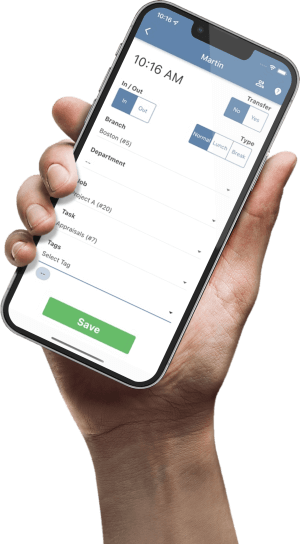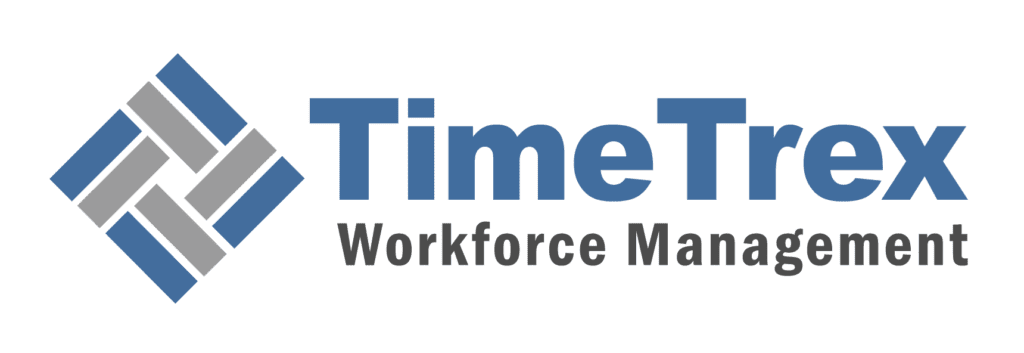
GPS and Geofencing Technology in Combating Time Theft
TL;DR
Employee time theft, through practices like buddy punching and timesheet padding, costs US businesses an estimated $400 billion annually, eroding profits and morale. This article explores how GPS and Geofencing technology, as implemented in systems like TimeTrex, offers a powerful solution. By creating virtual boundaries (geofences) and verifying employee locations via GPS, businesses can eliminate location fraud, ensure accurate timekeeping, and streamline payroll. The implementation of Geofencing and GPS time tracking provides a clear ROI by cutting direct labor costs, reducing administrative errors, and offering valuable data for operational insights. For US and Canadian small businesses, adopting this technology is a strategic move to prevent GPS time theft, enhance productivity, and maintain a fair workplace.
Article Contents
- The Silent Drain on Productivity: A Deep Dive into Time Theft
- The Technological Sentinel: How GPS and Geofencing Redefine Presence
- TimeTrex's Solution Architecture: A Forensic Analysis
- Building the Business Case: ROI and Operational Transformation
- Navigating the Labyrinth: Legal and Ethical Implementation of Location Tracking
- Conclusive Analysis and Strategic Recommendations
The Silent Drain on Productivity: A Deep Dive into Time Theft
Employee time theft is one of the most pervasive and underestimated threats to small businesses in the US and Canada. It's not just a few minor infractions; it's a systemic issue that silently drains billions from the economy, harms workplace culture, and creates significant legal risks. This GPS time theft prevention analysis establishes the severity of the problem and sets the stage for evaluating powerful technological solutions like geofencing.
Defining the Scope of Time Theft: Beyond the Clock
Time theft happens whenever an employee is paid for time they didn't actually work. Common forms include:
- Timesheet Falsification: Deliberately inflating work hours, such as rounding up clock-in/out times. Nearly half of all hourly employees admit to this.
- Buddy Punching: One employee clocking in for a colleague who is late, absent, or leaving early. This is a massive payroll loss for most businesses.
- Excessive Breaks: Consistently extending paid breaks beyond company policy.
- Late Starts and Early Finishes: Arriving late but recording an on-time start or leaving early while still on the clock.
- Intentional Time Wasting: Excessive personal internet use, social media, or running errands during paid work hours.
The Financial Hemorrhage: Quantifying the Staggering Costs
The financial impact of time theft is staggering. It is estimated to cost U.S. businesses $400 billion annually in lost productivity. For an individual company, this can amount to as much as 8% of gross payroll costs. The average employee steals about 4.5 hours per week, which for a small business with just ten employees, can translate to over $15,000 in unnecessary payroll expenses each year. A recent news story highlighted how a group of public workers manipulated timekeeping systems, resulting in massive fraudulent overtime payouts, showcasing the real-world consequences.
| Metric | Statistic / Financial Impact |
|---|---|
| Total Annual Cost to U.S. Businesses | $400 billion in lost productivity |
| Impact on Gross Payroll | 1% to 8% of total gross payroll costs |
| Prevalence of Buddy Punching | Affects 75% of U.S. businesses |
| Employees Admitting to Timesheet Padding | Nearly 50% of hourly employees |
| Average Weekly Time Stolen per Employee | Approximately 4 hours and 30 minutes |
| Annual Cost of Buddy Punching | Over $373 million |
The Human Element: Morale, Fairness, and the Ripple Effects of Deception
Beyond finances, time theft damages the cultural fabric of an organization. Honest employees become resentful and disengaged when they see dishonest behavior go unpunished. This can lead to a downward spiral in productivity across the entire workforce. Furthermore, inaccurate time records violate labor laws like the Fair Labor Standards Act (FLSA), exposing businesses to fines and lawsuits.
The Technological Sentinel: How GPS and Geofencing Redefine Presence
To combat time theft, businesses are turning to GPS and geofencing. This technology creates a precise, automated sentinel for time and attendance, offering a definitive countermeasure to fraudulent timekeeping and providing a foundation for GPS time theft prevention.
From Satellites to Smartphones: A Primer on GPS Location Verification
The Global Positioning System (GPS) uses a network of satellites to pinpoint a device's exact location. A smartphone's GPS receiver calculates its position by measuring signals from multiple satellites. This process, called trilateration, provides a reliable and objective data point for verifying an employee's location at the moment they clock in or out.
Drawing the Line: The Mechanics and Applications of Geofencing
Geofencing creates a virtual boundary, or "geofence," around a real-world area like a job site. Using mapping software, an administrator can draw a precise perimeter. When an employee's device enters or exits this geofenced zone, it triggers a predefined action, such as enabling the clock-in function on their mobile app. This automated, location-triggered action is what makes geofencing a powerful tool for enforcing attendance policies.
TimeTrex's Solution Architecture: A Forensic Analysis
TimeTrex has engineered a workforce management platform that integrates GPS and geofencing into a multi-layered architecture, providing a comprehensive defense against time theft.
Pinpoint Precision: Deconstructing TimeTrex's GPS Tracking Capabilities
TimeTrex uses GPS to capture an employee's exact location at the moment they clock in or out. Each time punch is tagged with geographic coordinates, creating an "indisputable record" and "verifiable proof of presence." This provides managers with a real-time, bird's-eye view of their workforce, enabling smarter dispatching and resource allocation.
The Virtual Perimeter: Implementing and Customizing Geofences in TimeTrex
With TimeTrex, administrators can easily create custom geofences of any shape or size around job sites. The system can be configured to prevent off-site punching, only allowing an employee to clock in when their GPS location is confirmed to be inside the designated boundary. This directly eliminates an employee clocking in from their car, a coffee shop, or home.
Beyond Location: Integrated Features that Reinforce Accountability
TimeTrex strengthens its GPS and geofencing with biometric facial recognition. This requires employees to take a selfie when clocking in, confirming their identity. This "multi-factor attendance" verifies both WHERE the punch occurs (geofence) and WHO is making it (biometrics), making it exceptionally difficult to commit fraud.
Building the Business Case: ROI and Operational Transformation
Implementing a system like TimeTrex provides a clear Return on Investment (ROI) through direct cost savings, administrative efficiencies, and strategic operational advantages.
Plugging the Leak: Direct ROI from Eliminating Time Theft
The most immediate ROI comes from eliminating fraudulent wage payments. Consider a company with 50 employees earning $20/hour. Based on the average of 4.5 hours of time theft per week, this company could save $234,000 annually in direct labor costs.
The Efficiency Dividend: Indirect ROI from Streamlined Payroll and Administration
Automating time and attendance can reduce payroll processing time by up to 95% and virtually eliminate costly data entry errors, which have a typical error rate between 1% and 8%. This leads to more accurate payroll, fewer disputes, and a more efficient administrative team.
Navigating the Labyrinth: Legal and Ethical Implementation of Location Tracking
Implementing employee location tracking requires navigating a complex legal and ethical landscape. A compliant and ethical rollout is achievable through transparency, consent, and understanding the regulatory framework.
Blueprint for a Compliant Rollout: A Checklist for Ethical Implementation
To navigate the legal terrain in the US and Canada, business leaders should follow a structured plan:
- Develop a Clear, Written GPS Tracking Policy: Draft a comprehensive, standalone policy before deploying any technology.
- Provide Explicit, Detailed Notice: Distribute the policy to all employees, clearly explaining the "who, what, when, where, and why" of the tracking program.
- Obtain Written, Informed Consent: Require each employee to sign an acknowledgment form confirming they understand and consent to the policy.
- Strictly Limit Tracking to Work Hours: Configure the technology to ensure location tracking is only active during scheduled work hours for business purposes.
| Compliance Area | General Best Practice (U.S. & Canada) | Strict Requirement (e.g., California) |
|---|---|---|
| Policy | Have a written policy outlining the purpose and scope of tracking. | A detailed, written policy is mandatory and must be provided before monitoring begins. |
| Consent | Consent is highly advisable, especially for personal devices (BYOD). | Explicit, affirmative, written consent is required for any tracking. |
| Off-Hours Privacy | Avoid tracking employees outside of work hours. | Tracking outside of work hours is prohibited. Employees must have the right to disable monitoring. |
Conclusive Analysis and Strategic Recommendations
The evidence is clear: time theft is a severe problem, and modern technology like GPS and geofencing offers an effective solution. For US and Canadian small businesses, adopting a system like TimeTrex is a strategic imperative to protect profits, improve morale, and ensure legal compliance.
Strategic Recommendations for Business Leaders
- Conduct an Internal Audit: Quantify your organization's potential exposure to time theft to build a data-driven business case.
- Prioritize a Legally Vetted Implementation: Engage legal counsel to draft a state/province-specific monitoring policy before you begin.
- Adopt a "Transparency First" Communication Strategy: Frame the new system as an investment in fairness and accuracy for everyone to build employee trust.
- Select a Comprehensive, Integrated Solution: Choose a platform like TimeTrex that combines GPS, geofencing, and biometrics for robust fraud defense.
- Leverage the Data for Strategic Improvement: Use the insights from your system to optimize scheduling, improve job costing, and drive business intelligence.
Ready to Eliminate Time Theft and Boost Your Bottom Line?
Discover how TimeTrex's powerful GPS and Geofencing features can provide your business with indisputable proof of presence, streamline payroll, and deliver a significant return on investment. Take control of your workforce management today.
Learn More About TimeTrex GPS & GeofencingDisclaimer: The content provided on this webpage is for informational purposes only and is not intended to be a substitute for professional advice. While we strive to ensure the accuracy and timeliness of the information presented here, the details may change over time or vary in different jurisdictions. Therefore, we do not guarantee the completeness, reliability, or absolute accuracy of this information. The information on this page should not be used as a basis for making legal, financial, or any other key decisions. We strongly advise consulting with a qualified professional or expert in the relevant field for specific advice, guidance, or services. By using this webpage, you acknowledge that the information is offered “as is” and that we are not liable for any errors, omissions, or inaccuracies in the content, nor for any actions taken based on the information provided. We shall not be held liable for any direct, indirect, incidental, consequential, or punitive damages arising out of your access to, use of, or reliance on any content on this page.
About The Author

Roger Wood
With a Baccalaureate of Science and advanced studies in business, Roger has successfully managed businesses across five continents. His extensive global experience and strategic insights contribute significantly to the success of TimeTrex. His expertise and dedication ensure we deliver top-notch solutions to our clients around the world.
Time To Clock-In
Start your 30-day free trial!
Experience the Ultimate Workforce Solution and Revolutionize Your Business Today
- Eliminate Errors
- Simple & Easy To Use
- Real-time Reporting

Saving businesses time and money through better workforce management since 2003.
Copyright © 2025 TimeTrex. All Rights Reserved.
